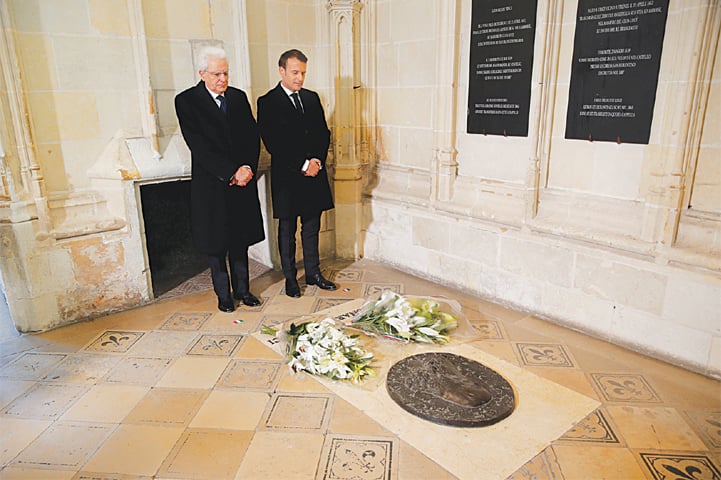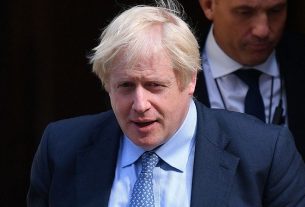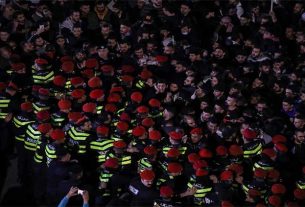AMBOISE: French President Emmanuel Macron and his Italian counterpart Sergio Mattarella on Thursday kicked off commemorations to mark 500 years since Leonardo da Vinci died in France, paying their respects to the Renaissance genius in a show of unity after months of diplomatic tensions.
“The bond between our countries and our citizens is indestructible,” Macron said after the two leaders lunched at the Clos Luce, the sumptuous manor house where Leonardo spent the last three years of his life.
The two heads of state began their visit at the royal chateau in Amboise, where they laid wreaths at Leonardo’s grave.
The joint celebrations come after months of mounting diplomatic tensions between Paris and Rome over the hardline policies of Italy’s populist government and its support for France’s anti-government “yellow vest” protesters.
In the worst diplomatic crisis between the two countries since World War II, Paris briefly recalled its ambassador from Rome.
Amboise, a sleepy town on the Loire River where Leonardo died in 1519, was in virtual lockdown because of fears of protests by France’s grassroots “yellow vest” movement.
Traffic in the town of just 13,000 was banned within a five-kilometre radius and the usually teeming restaurants and shops shuttered. On Wednesday, dozens of cars were towed away, with some foreign owners apparently unaware of the draconian security measures.
The presidential helicopter arrived on a river island in the heart of the town, touching down on a pad usually used to launch hot-air balloons over the chateau-studded valley.
Later on Thursday, the two presidents headed to the sprawling chateau of Chambord — whose central double-helix staircase is attributed to Leonardo though the first stone was not laid until four months after his death.
Among glitterati attending the events were Italian star architect Renzo Piano, French astronaut Thomas Pesquet and historian Stephane Bern, a prominent French television personality.
But a new scandal hung over the event after a French arts magazine revealed on Tuesday that an investigation had been opened into the alleged destruction of listed property during extensive renovation work at the Clos Luce in 2017.
The online La Tribune de l’Art said workers removed 18th-century woodwork and a fireplace and made major alterations to floors and ceilings in the privately owned mansion.
Francis I, known as the “Sun King of the 16th century”, is widely credited with bringing the Renaissance to France, even if his predecessor Louis XII had begun the process by bringing in architects and artisans from Florence, Milan and Rome.
Leonardo was 64 when he accepted the young Francis I’s invitation to Amboise, at a time when rivals Michelangelo and Raphael were rising stars.
With Leonardo’s commissions drying up, it came as a great relief and no small vindication for the Tuscan artist, who received a handsome stipend as the “first painter, engineer and architect of the king”.
At the time, Francis I was barely 23, and his ambitious mother Louise of Savoy “knew that Leonardo would be the man who would allow her son to flourish”, Catherine Simon Marion, managing director of the Clos Luce, said.
Leonardo brought with him three of his favourite paintings: the Mona Lisa, the Virgin and Child with Saint Anne, and Saint John the Baptist — all of which today hang in the Louvre museum in Paris.



